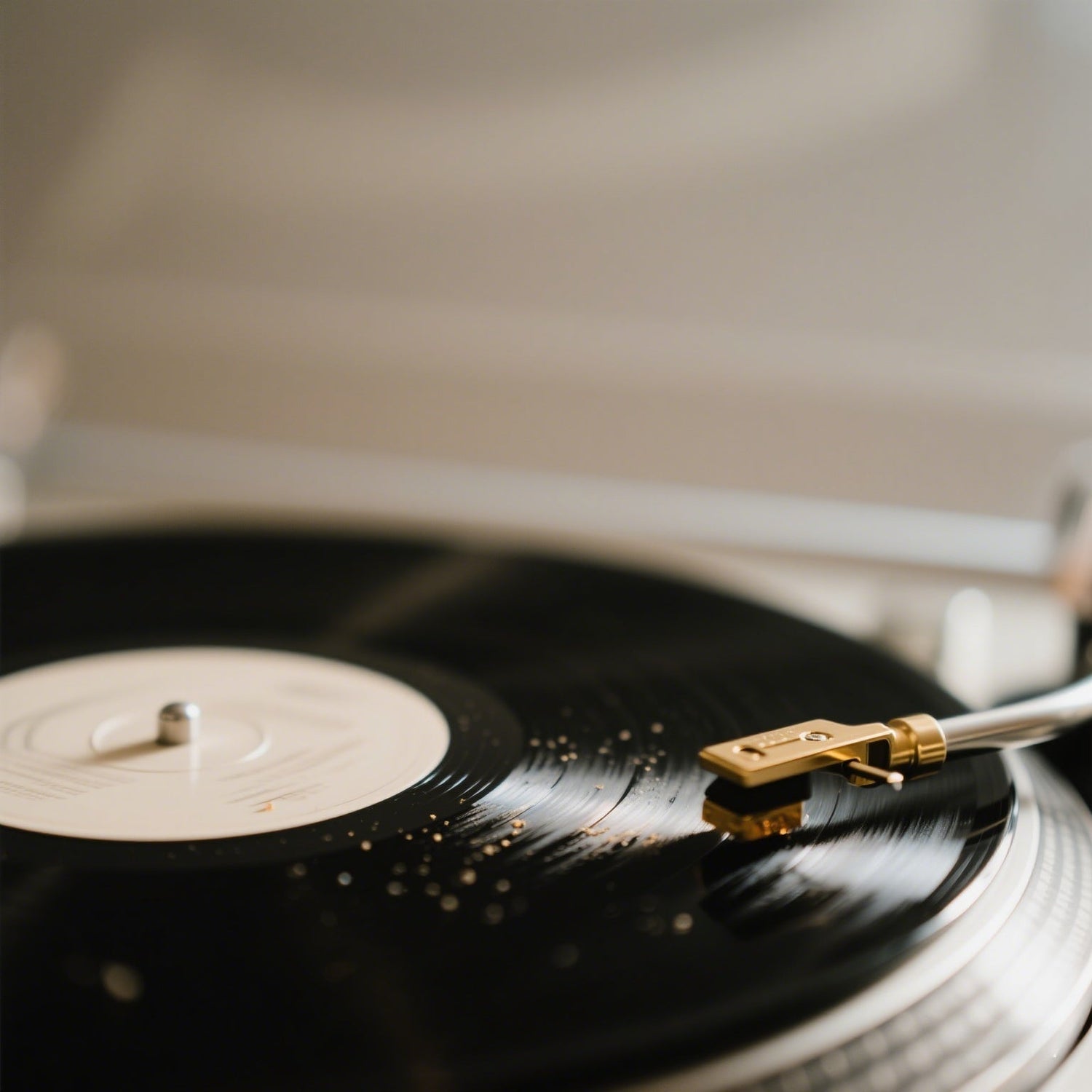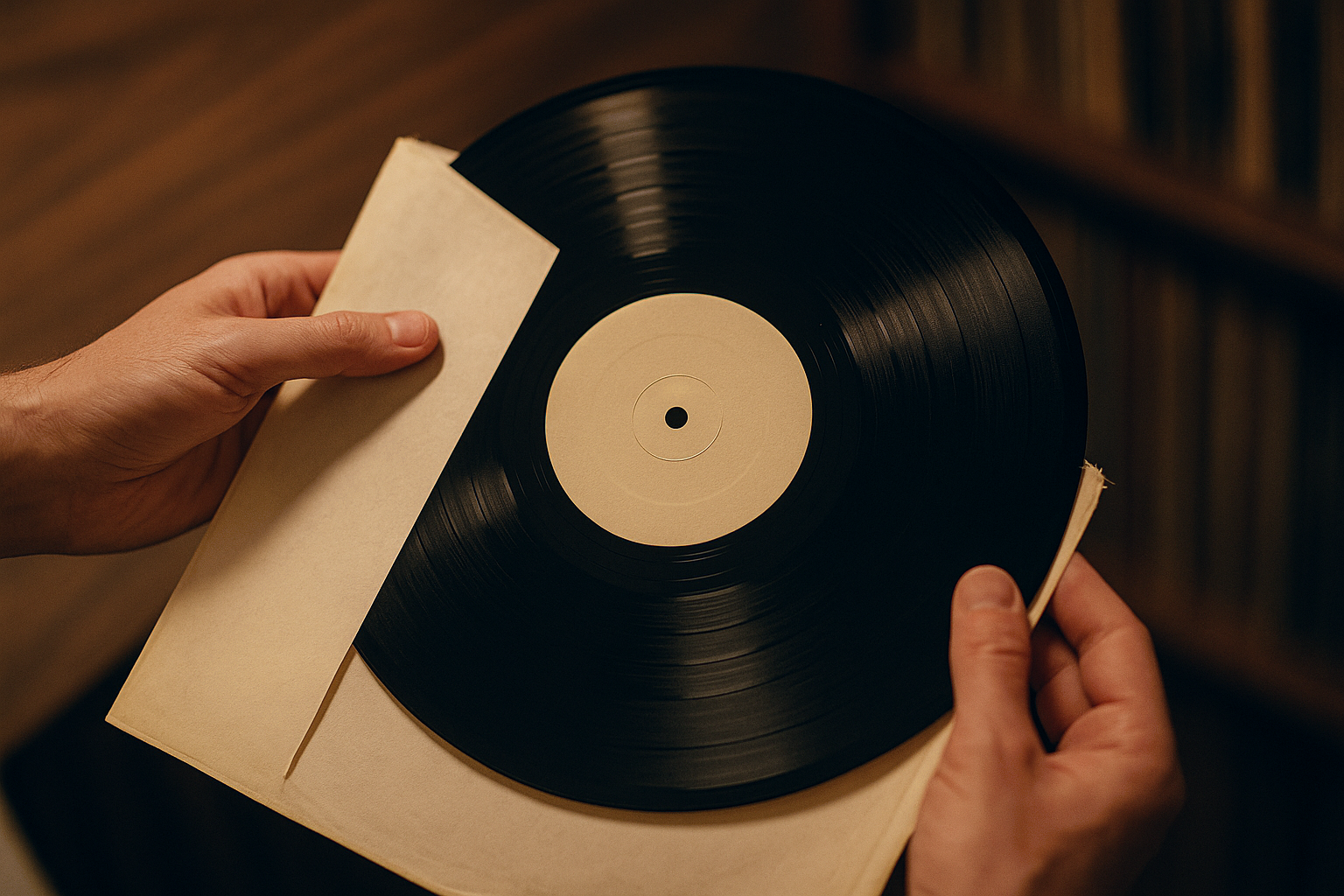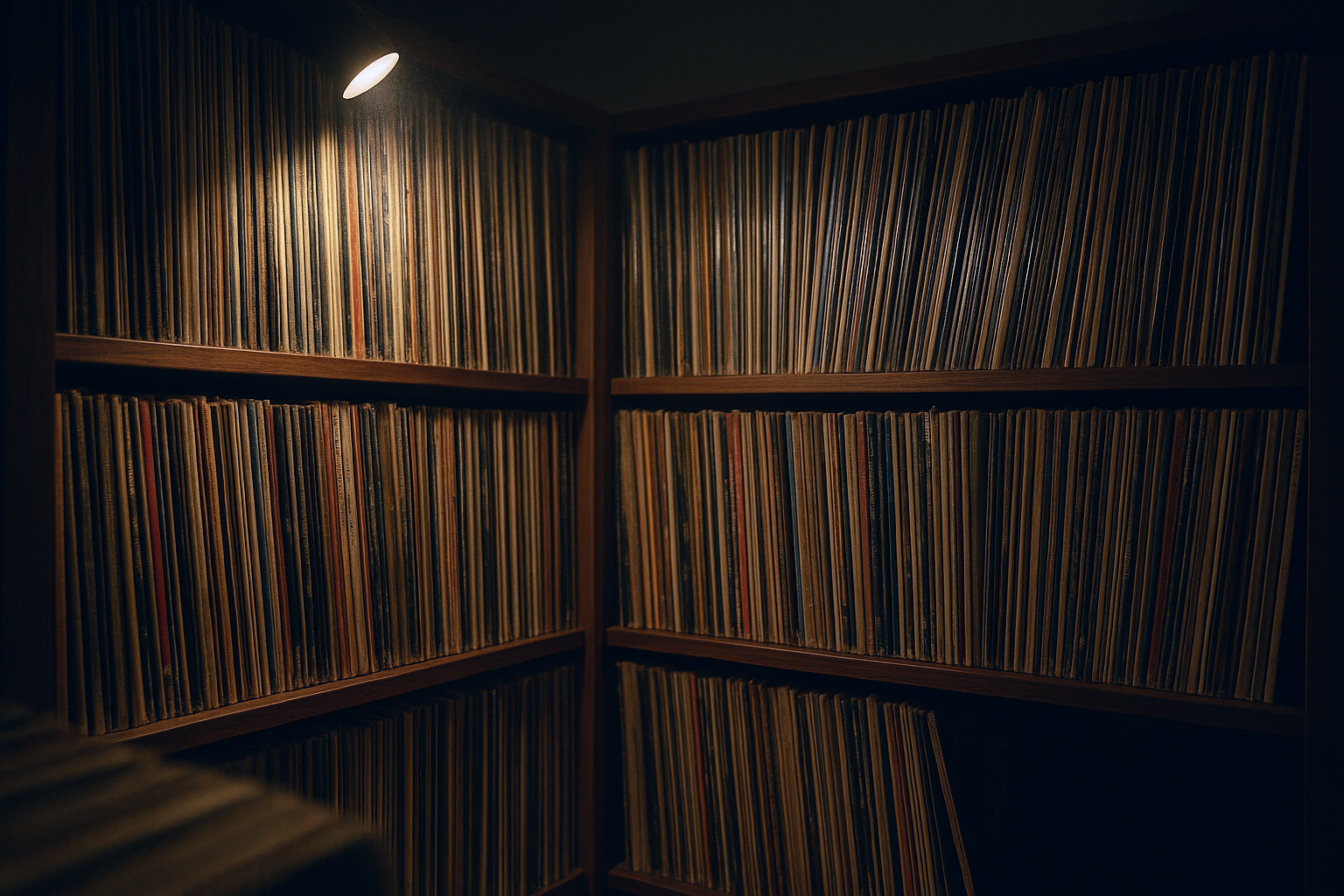The allure of vinyl is undeniable. In an age of ephemeral digital streams, the tangible act of placing a record on a platter, the gentle drop of the needle, and the warm, immersive sound offer a uniquely satisfying connection to music. If you're a beginner looking to embark on this analog journey, welcome! But a word of caution: your first record player is a critical choice, one that can either open the door to a lifetime of sonic joy or lead to frustration and damaged LPs.
Many newcomers are tempted by those colorful, all-in-one "suitcase" players. They look fun, they're cheap, and they promise instant vinyl gratification. Let's be brutally honest, from one music lover to another: avoid them like the plague. They might seem like a harmless entry point, but the reality is they often fail at the most fundamental tasks of a record player: preserving your records and producing even passably decent sound.
At XJ-HOME, we believe in starting your audio journey on the right foot. (You can explore more of our thoughts on building a quality audio experience on the XJ-HOME Blog). This guide isn't about upselling you; it's about empowering you to choose a beginner record player that's truly "perfect" – perfect for your records, perfect for your ears, and perfect for fostering a lasting love for vinyl.
Deconstructing "Perfect": What a Beginner Really Needs
Before diving into features, let's establish the first principles of what a beginner record player must deliver:
-
It Must Do No Harm (To Your Records): This is non-negotiable. Vinyl records are delicate. A poorly designed tonearm, a cheap stylus (needle) made of inferior materials, or excessive tracking force (the pressure of the needle on the record) can literally carve up your precious grooves. Those suitcase players? They are notorious offenders, often using crude tonearms and ceramic cartridges that track at forces far too high. [External Link: Search for videos on YouTube demonstrating "suitcase player record damage" – the visual evidence is often compelling, though be critical of sources.]
-
Key takeaway: Your first player needs a decent quality stylus and a tonearm that allows for proper (and gentle) tracking.
-
-
It Must Provide Audible Fidelity: The whole point of vinyl is the sound, right? Your first player should be capable of reproducing music with enough clarity, detail, and balance to be genuinely enjoyable. This means it needs reasonably well-engineered core components:
-
A Stable Platter: It should spin at a consistent speed without wobbling.
-
A Decent Tonearm: It should allow the stylus to move freely and accurately across the record.
-
A Quality Cartridge: This is what "reads" the grooves. Even an entry-level magnetic cartridge will vastly outperform the ceramic ones in cheap players.
-
The Beginner's Blind Spot: It's easy to get swayed by flashy features like built-in Bluetooth speakers or USB outputs for digitizing records. While these can be conveniences, on truly entry-level players, their inclusion often means compromises were made on the core mechanical and audio components that actually affect sound quality and record care. Prioritize playback integrity over bells and whistles.
Key Components & Features: A Beginner's (Honest) Checklist
Let's break down what to look for, keeping it simple but truthful:
-
Turntable Drive System (Belt-Drive is Your Friend):
-
Most good beginner turntables are belt-drive. This means the motor is offset from the platter and connected by a belt. This design helps isolate motor vibrations from the platter and stylus, leading to cleaner sound. Direct-drive is another type, often excellent, but quality direct-drive typically starts at a higher price point.
-
-
Tonearm – The Unsung Hero:
-
Look for a tonearm that feels reasonably well-constructed (not flimsy plastic).
-
Adjustable Counterweight: This is CRUCIAL. It allows you to set the correct tracking force for your specific cartridge, which is vital for sound quality and preventing record wear.
-
Anti-Skate Control: As the stylus tracks the groove, a natural force pulls it towards the center of the record. Anti-skate counteracts this, ensuring the stylus sits evenly in the groove for balanced sound and even wear. Even a basic anti-skate mechanism is far better than none.
-
-
Cartridge & Stylus – The Point of Contact:
-
Your player should come with a Moving Magnet (MM) cartridge from a reputable brand (e.g., Audio-Technica, Ortofon). These offer good performance and, importantly, the stylus is usually user-replaceable.
-
Avoid players with fixed, non-replaceable ceramic cartridges.
-
(Thinking about future upgrades? XJ-HOME has a handy guide to understanding phono cartridges for when you're ready to explore.)
-
-
Plinth & Platter – Stability Matters:
-
Plinth (Base): Look for a solid plinth, often made of MDF (medium-density fiberboard) or even acrylic on slightly higher-end beginner models. This helps dampen vibrations. Avoid ultra-lightweight, hollow plastic plinths.
-
Platter (What the Record Sits On): An aluminum or steel platter is good. Some use acrylic. These offer better speed stability and resonance control than cheap, thin plastic platters.
-
-
Built-in Phono Preamp – Convenience vs. Flexibility:
-
The signal from a turntable cartridge is very weak and needs special equalization (RIAA curve) and amplification before it can be fed into a standard amplifier or powered speakers. This is what a phono preamplifier (or phono stage) does.
-
Pros of Built-in: Many beginner turntables include one. This means you can connect the turntable directly to powered speakers or any amplifier input (like AUX), which is super convenient.
-
Cons of Built-in: The quality of built-in phono stages can vary. A dedicated external phono preamp will almost always sound better and offers an upgrade path.
-
XJ-HOME Advice: A built-in phono preamp is fine for starting. Ideally, look for one that has a bypass switch (often labeled "Phono/Line"). This allows you to use the built-in one initially, then upgrade to a better external one later without replacing your whole turntable.
-
-
Connectivity – Getting the Sound Out:
-
RCA Outputs: These are standard and allow you to connect to an external phono preamp, amplifier, or powered speakers. Essential.
-
Bluetooth Output: Some beginner models offer this. It's convenient for wireless speakers, but be aware that Bluetooth compresses the audio signal, so you won't be hearing the full analog quality. It's a nice-to-have, not a must-have for sound quality.
-
USB Output: Allows you to connect to a computer to digitize your records. Again, a useful feature for some, but its presence doesn't indicate playback quality.
-
Red Flags: What to AVOID AT ALL COSTS
Seriously, steer clear of players with these characteristics:
-
The All-in-One Suitcase/Briefcase Design: We've said it before, but it bears repeating. These are generally bad news for your records and your ears.
-
No Adjustable Counterweight: If you can't set the tracking force, it's likely too high and will damage your records.
-
No Anti-Skate Mechanism: Leads to uneven groove wear and distorted sound.
-
Fixed Ceramic Cartridge: These track heavily, sound harsh, and offer no upgrade path for the stylus.
-
Overwhelmingly Flimsy Plastic Construction: Especially for the tonearm and platter. Indicates cut corners everywhere.
-
Tiny, Built-in Speakers: These are a gimmick and will sound terrible. You need proper external speakers. [External Link: Check out What Hi-Fi? or CNET for reviews of reputable entry-level powered speakers.]
Budgeting Realistically: Investing in Your Enjoyment
While those $50-$100 suitcase players are tempting, a good quality beginner turntable that won't wreck your records and will provide genuinely enjoyable sound typically starts in the $200 to $500 range (as of 2025). Brands like Audio-Technica (e.g., AT-LP60XBT - though ensure it has an upgradeable cartridge if possible, or step up to the AT-LP120XUSB), U-Turn Audio (Orbit series), Pro-Ject (Debut series), Rega (Planar 1), and Fluance (RT81/RT82 and up) offer excellent options in this range.
Don't Forget the System! A turntable is just one piece of the puzzle. You'll also need:
-
Amplification: Either an amplifier with a phono input, an amplifier with line inputs (if your turntable has a built-in preamp), or powered speakers (which have their own amplification).
-
Speakers: Passive speakers (need an amplifier) or powered speakers.
(If you're building a whole system, XJ-HOME offers advice on creating a balanced beginner audio setup on our site.)
Think of it as an investment. Spending a little more upfront on a quality turntable means your records will last longer, your music will sound better, and you'll be much more likely to stick with and enjoy this fantastic hobby.
The XJ-HOME Philosophy for Beginners: Start Right, Grow Smart
At XJ-HOME, we believe that everyone deserves to experience the joy of high-quality audio, regardless of their budget or experience level. For beginners venturing into vinyl, our advice is simple:
-
Prioritize Core Quality: Focus on the components that directly impact sound and record care – the tonearm, cartridge, and platter stability.
-
Understand the Fundamentals: Take a little time to learn why these components matter. An informed choice is always a better choice.
-
Build a Foundation for Growth: A good beginner turntable can serve you well for years and can often be upgraded (e.g., with a better cartridge or external phono preamp) as your passion and budget grow.
We see ourselves as more than just a retailer; we aim to be a trusted resource on your audio journey. You can learn more about our approach on our XJ-HOME About Us page.
Your First Step into a Wider World of Sound
Choosing your first record player is an exciting step. The "perfect" beginner turntable isn't about having the most features or the flashiest design. It's about finding a reliable, well-engineered machine that respects your music, protects your records, and delivers a genuinely engaging listening experience. Do your research, read reviews from trusted sources (not just Amazon top-sellers), and prioritize those fundamental quality indicators.
Make an informed decision, and you'll be rewarded with years of analog bliss. Welcome to the club!





Leave a comment
All comments are moderated before being published.
This site is protected by hCaptcha and the hCaptcha Privacy Policy and Terms of Service apply.